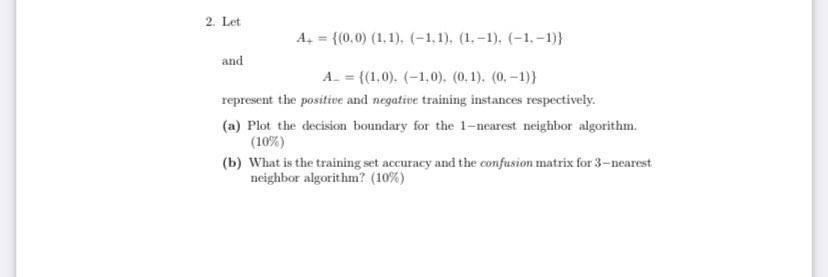Answered step by step
Verified Expert Solution
Question
1 Approved Answer
2. Let A+={(0,0)(1,1),(1,1),(1,1),(1,1)} and A={(1,0),(1,0),(0,1),(0,1)} represent the positive and negative training instances respectively. (a) Plot the decision boundary for the 1-nearest neighbor algorithm. (10%) (b)

Step by Step Solution
There are 3 Steps involved in it
Step: 1

Get Instant Access to Expert-Tailored Solutions
See step-by-step solutions with expert insights and AI powered tools for academic success
Step: 2

Step: 3

Ace Your Homework with AI
Get the answers you need in no time with our AI-driven, step-by-step assistance
Get Started


